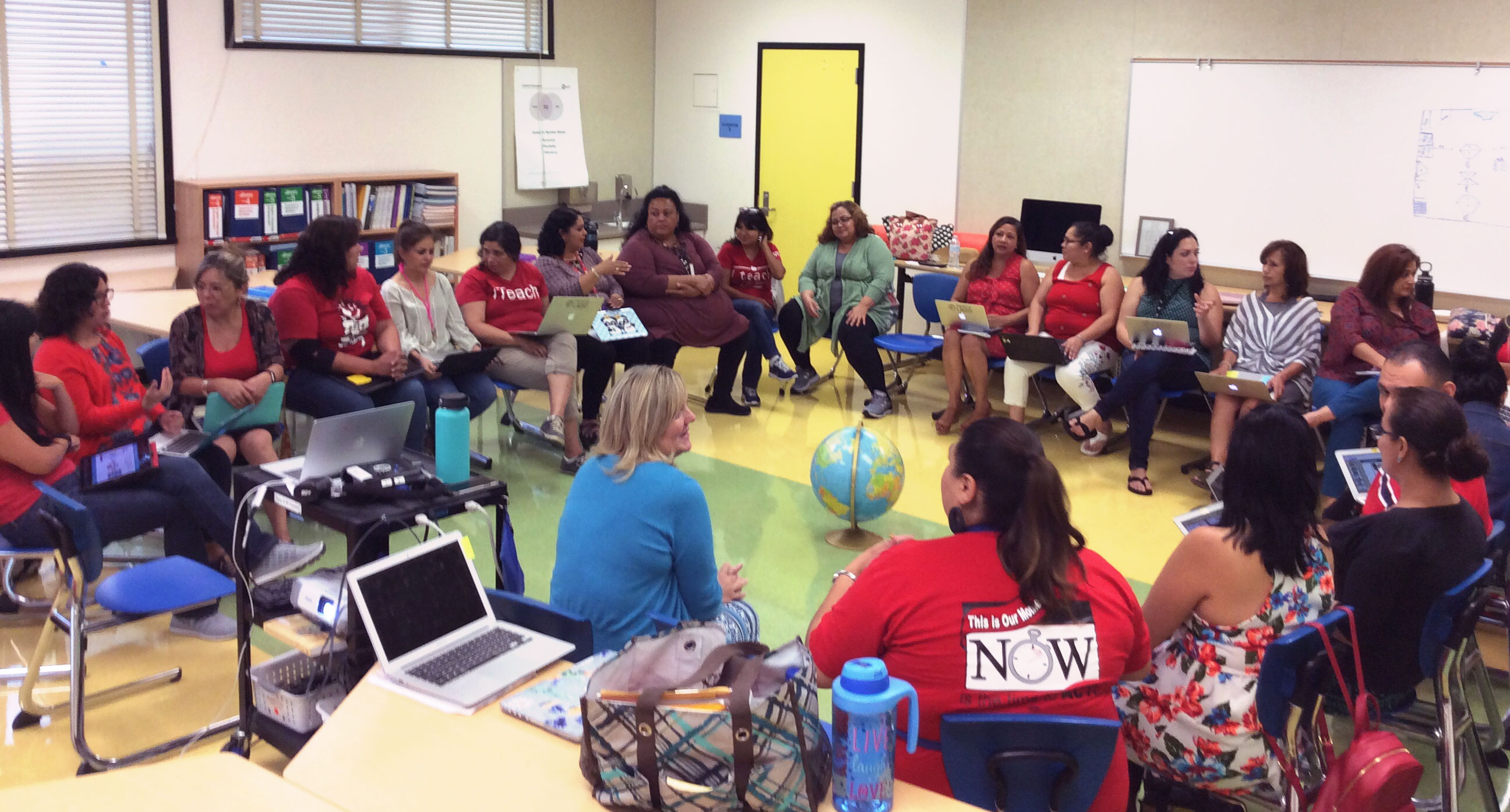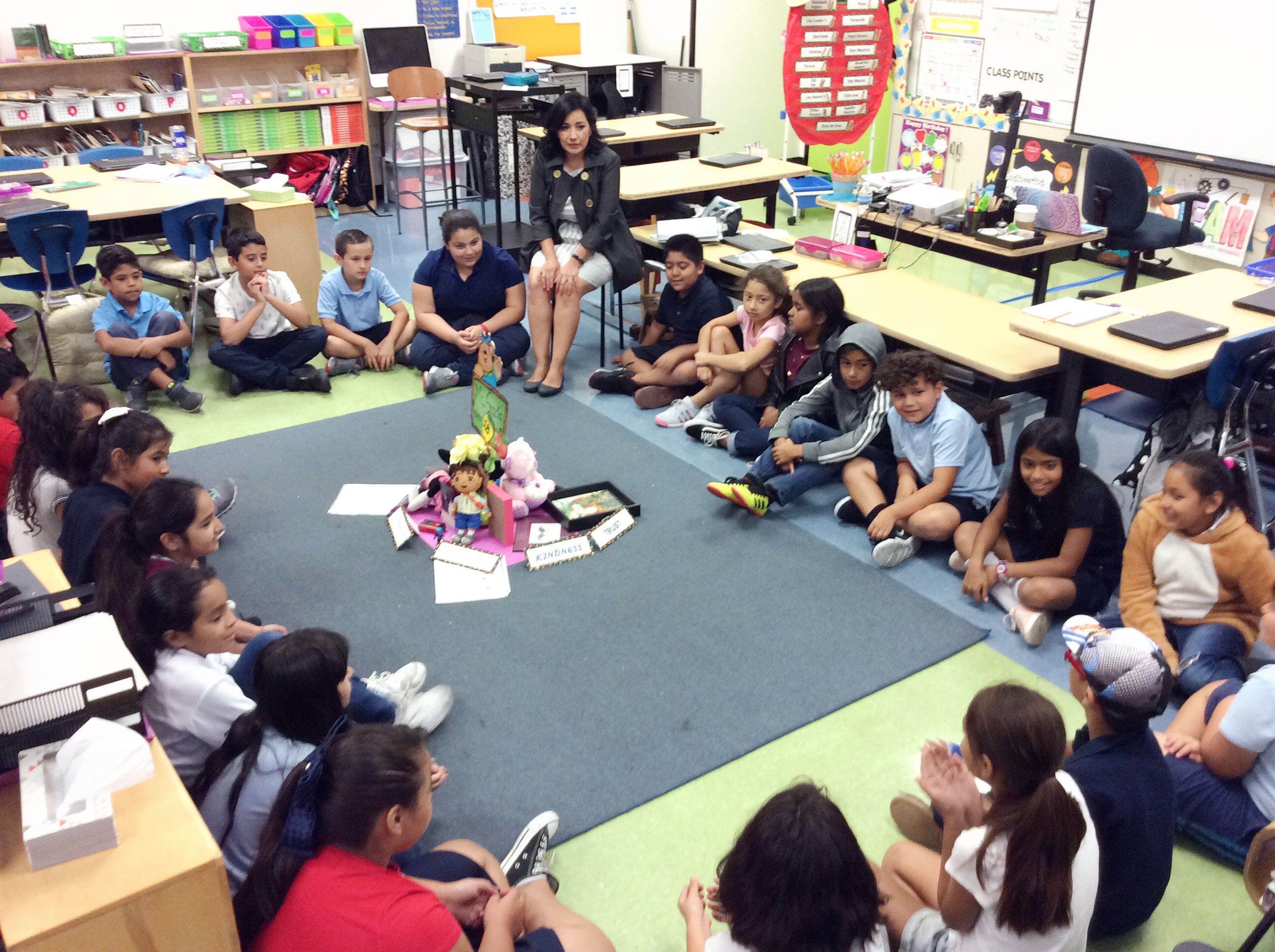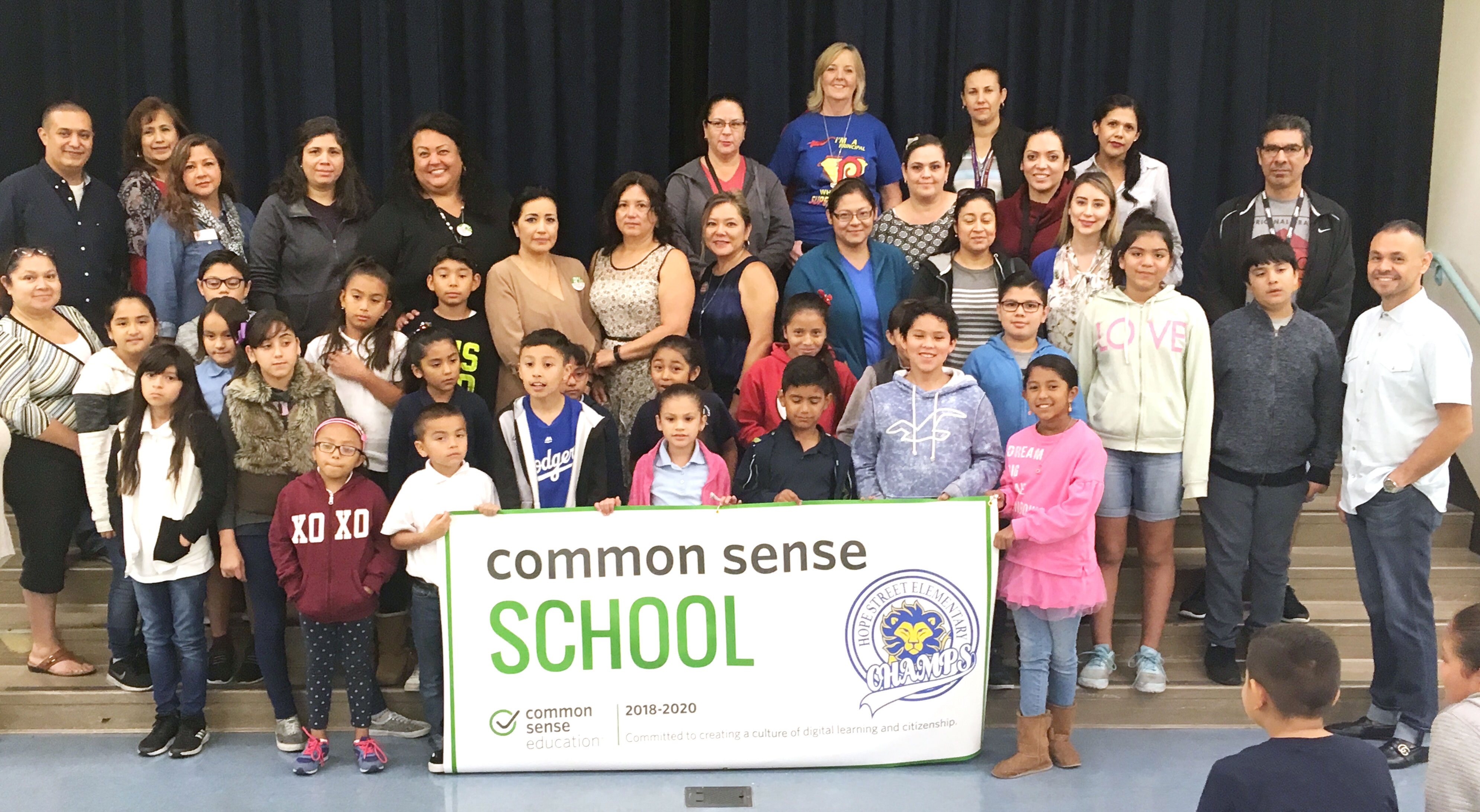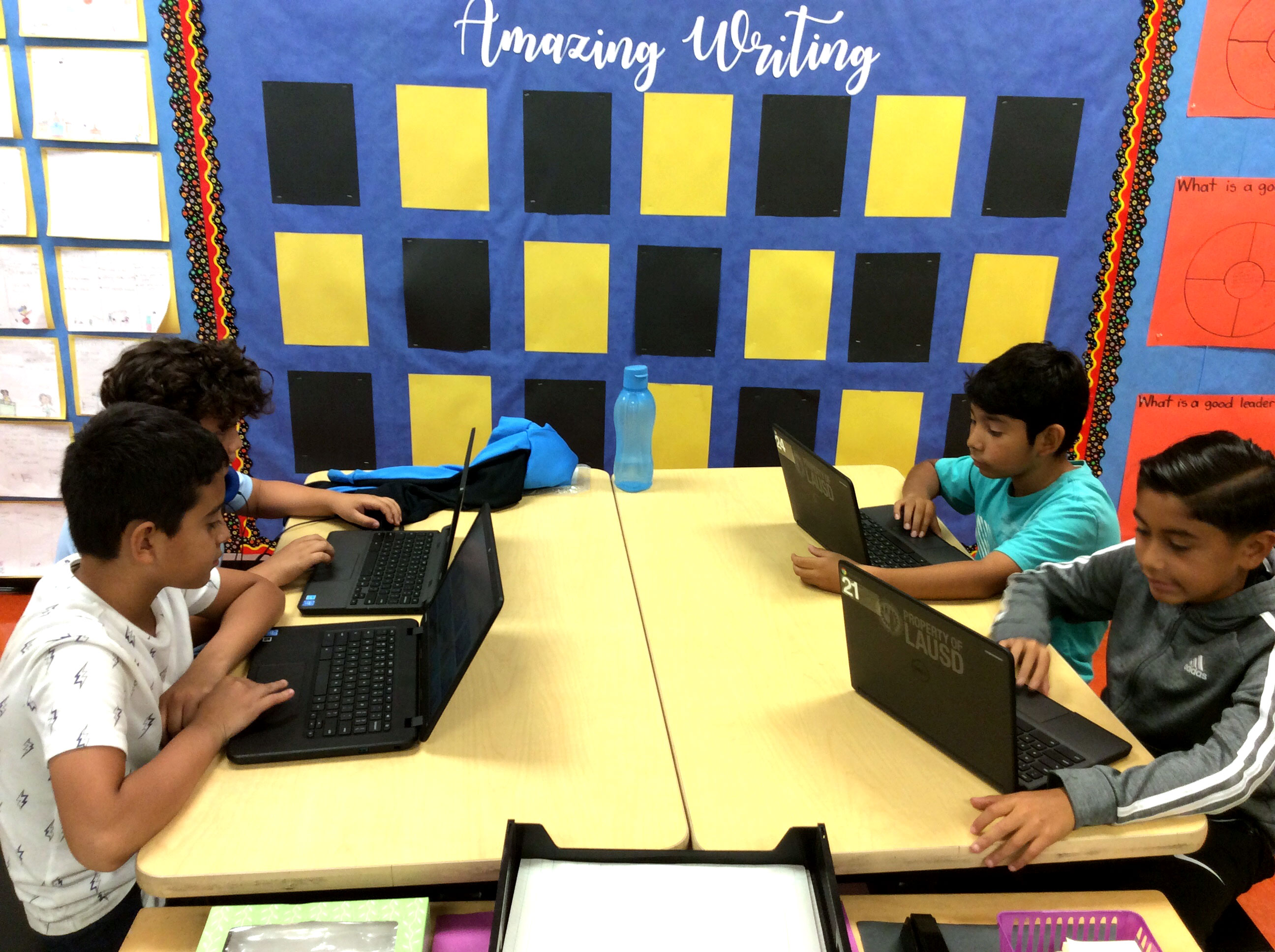- Los Angeles Unified School District
- Spotlight Articles
Supporting A Positive School Culture Through the New Digital Citizenship and Restorative Practices
Implementation of Digital Citizenship at Hope Street Elementary School
by: Ed Zurita, ITI Instructional Technology Facilitator

The New Digital Citizenship combined with Restorative Practices offers Hope Street Elementary School in the Los Angeles Unified School District new opportunities to empower students through positive behavior and community building strategies. The school has begun to implement Digital Citizenship instruction during Restorative Circles and throughout the school day to help enhance their School-Wide Positive Behavior Intervention and Support Plan (SWPBIS). Restorative practices help to strengthen relationships between individuals as well as social connections within communities. Restorative circles allow teachers to proactively build the relationships and skills that students need to support one another and collectively address the challenges they face including those of being effective Digital Citizens. When Restorative and Digital Citizenship practices are integrated students learn to transfer their positive behavior online.
Hope St. Elementary's learner-centered approach to teaching Digital Citizenship through Restorative Practices aligns to the International Society for Technology in Education (ISTE) Essential Conditions. The 14 ISTE Essential Conditions provide educators and school leaders a research-backed framework to guide implementation of the ISTE Standards, technology planning and systemwide change. The integration of Digital Citizenship with Restorative Practices addresses Essential Condition #1 which calls for a shared vision for educational technology. Hope St., teachers, parents, students and staff have incorporated Digital Citizenship as part of their shared vision and School-Wide Positive Behavior Intervention and Support Plan (SWPBIS). The school contends that in the 21st century, being good digital citizens and coaching

ISTE STANDARDS FOR STUDENTS 2: DIGITAL CITIZEN - Students discuss what it means to be an effective Digital Citizen during their Restorative Circle time.
students to model good digital citizenship and safe online behavior should not be separated from a school’s vision and mission. According to Principal Pamella LeMuiex, “In today’s world, we want students to see how their in-person and digital footprints can no longer be separate and that how we interact in the world happens in many places.” The integration of Digital Citizenship into the school’s SWPBIS plan also addresses ISTE Essential Condition #12 which requires support policies that promote the use of digital tools and resources for both learning and district/school operations. Through Restorative Practices and promoting Digital Citizenship both inside and outside the classroom, Hope St. Elementary is able to simultaneously address student learning and positive behavior.
Hope Street Elementary School is part of LAUSD’s Practitioner 3.0 Network and has become a Common Sense Digital Citizenship Certified School. They also organized a Digital Citizenship Curriculum Fair during LAUSD’s annual Digital Citizenship week that was held from October 15-19, 2018. During their school-wide Digital Citizenship Curriculum Fair, Hope Street students, parents, teachers and staff engaged in Restorative practices in tandem with Digital Citizenship activities.

How does the New Digital Citizenship help support a positive school culture?
In the classroom and school-wide all students, educators and education leaders can improve their Digital Citizenship skills by engaging in ISTE’s three new Digital Citizenship roles of 1) Digital Self, 2) Digital Interactor and 3) Digital Agent combined with Restorative Practices:
1) DIGITAL SELF: Educators can take a proactive approach to teach all students how to nurture a positive self-image and self-respect. Once students understand the greater impact of their actions and learn to take responsibility for their actions they will have the tools to participate ethically online. At Hope St. Elementary School, teachers and staff embed digital citizenship instructional strategies that reinforce students’ Digital Self. Students are learning about their digital footprints, self-image and identity throughout the instructional day both inside and outside the classroom.


2) DIGITAL INTERACTOR: Educators can teach students to be digital interactors who are ethical and empathetic digital communicators and collaborators. Utilizing a Restorative approach, Hope St. Elementary teachers implement community building activities that help establish expectations and allow students to strengthen their relationships with each other. According to Hope St. Elementary School teacher, Maria A. Garcia “The community building circles help students meet their social need to belong and feel valued by peers and significant adults. The community building circles is a safe space for students to talk and be heard by their peers and teachers.” Teachers are also utilizing L.A. Unified’s Learning Management System (LMS) to support students as Digital Interactors. Teacher, Alma Gracia states “With expectations in place during Restorative Circle time and through the LMS, our students are better able to build relationships, communicate, and collaborate both online and offline.”
3) DIGITAL AGENT: Educators can teach students to be digital agents who consider themselves to be stewards of responsible use in online spaces beyond their classrooms. Hope St. Elementary teachers and staff help students recognize their role as positive contributing members of the school community and the world. These are discussion topics that are held during Restorative Circles and throughout the instructional day where students have the opportunity to participate in classroom projects and activities. This allows students to become curious about and interested in civic and social issues at the local, state, national, and global levels, and use digital means to learn about and stay current with these issues.
How do Hope St. Elementary teachers and staff respond when a student engages in inappropriate online behavior?
Using a Digital Citizenship and Restorative approach teachers and staff help students take responsibility for their actions rather than disconnect students from the school. The three Digital Citizenship roles serve to teach students that when a person does harm, it affects the persons they hurt (Digital Interactor), the community (Digital Agent), and themselves (Digital Self). When using restorative practices, an attempt is made to repair the harm caused by one person to another and to the community so that everyone is moved toward healing. Combined with the New Digital Citizenship roles, restorative practices are helping Hope St. Elementary School to establish a positive school culture and enhance prosocial relationships within the school community. Teachers and staff plan to continue teaching the three digital citizenship roles of Digital Self, Digital Interactor and Digital Agent alongside restorative practices to help promote a positive school culture of digital citizenship and support students’ social-emotional development. By consistently implementing the New Digital Citizenship competencies and Restorative Practices school-wide, the school aims to improve their school climate, promote community, and reduce student misconduct both online and offline.

